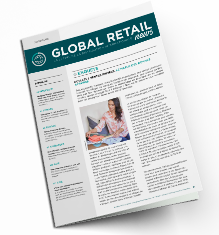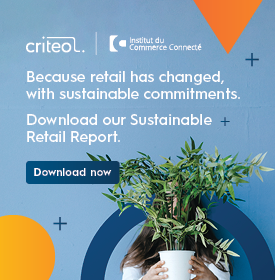Drive in shopping: a formula for the future?
It seems that customers have integrated click & collect, drive thru stores and curbisde pickup into their shopping processes. Experiments conducted by Aushopping (Ceetrus) in France and CapitaLand in Singapore show a new type of shared service is taking shape. What is the cost and advantages for retailers, especially independents? The model is not solid yet.

25 brands (here Oxybul) are present on the Aushopping Drive platform that Ceetrus is deploying in France before attacking Europe.
Almost anything can be done via drive thru pickup points. We have seen this offered by every screen on the planet during lockdown. Covid-19 testing, direct food sales from farmers and movie drive-in were all possible on-the-go. Although stores have widely reopened for business, the drive thru tsunami has not abated. The standard form is a rank of parked cars with customers queuing to retrieve online purchases, even if not visiting a store. What is called in Europe “drive” and in USA “curbside pickup”. The investments announced in June by the American Walmart in the United States are symptomatic of the demand for this new sales channel. Profitability remains unclear, 20 years after the opening of a first click & collect point in northern France by Auchan. At the end of June, the Walmart subsidiary Sam’s Club warehouse club chain deployed curbside pickup services in 4 weeks for all 600 stores.
Shopping centres are historically a prime destination and source of leisure, but not logistics experts. Should they now expand into this new sales channel for mobile shopping? This is a trend towards a blended omnichannel. Services include drive thru stores, click & collect, relay points, in-store or home/work delivery. There are retail pilots for ‘geolocalised’ delivery where products are dropped to the precise location of the mobile device user. All these options must respect environmental constraints. “Within the Covid-19 crisis, the most reluctancy consumers are converting to these services” says Nathalie Damery of ObSoCo. “We see a solid demand from those who consider old-fashion shopping to be a chore”.
Property developers are seeking a formula that meets this demand for customer mobility but matches the needs of retailers. New business models and new ways of working together must be defined. There has been no shortage of urgent trials during lockdown. From Nakheel Malls (cf. GRN of June 2020), owner of 6 centres in Dubai with its “Call, Come, Collect” service, to The Scentre Group in Australia (42 shopping centres). The latter launched the Westfield Direct platform in April. Created to enable retailers to keep in touch with their customers and support local businesses, this initiative was short-lived.





